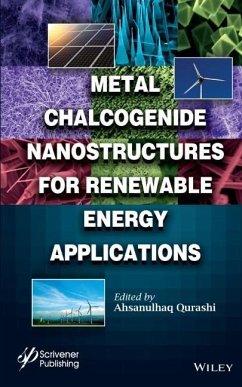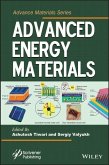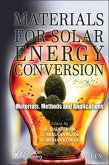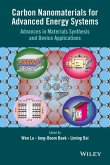The first book written on this important topic, Metal Chalcogenide Semiconductor Nanostructures and Their Applications in Renewable Energy provides an in-depth examination of the properties and synthesis of a class of nanomaterials essential to renewable energy manufacturing. Encapsulating the state-of-the-art in multidisciplinary research on the metal chalcogenide semiconductor nanostructures, this book provides students, scientists, engineers, researchers, and industrialists with a review of the synthesis of metal chalcogendie nanostructures, their growth mechanism, optical, electrical, and other important properties, and their applications in different diverging fields.
This first ever reference book that focuses on metal chalcogenide semiconductor nanostructures for renewable energy applications encapsulates the state-of-the-art in multidisciplinary research on the metal chalcogenide semiconductor nanostructures (nanocrystals, nanoparticles, nanorods, nanowires, nanobelts, nanoflowers, nanoribbons and more).
The properties and synthesis of a class of nanomaterials is essential to renewable energy manufacturing and this book focuses on the synthesis of metal chalcogendie nanostructures, their growth mechanism, optical, electrical, and other important properties and their applications in different diverging fields like photovoltaics, hydrogen production, theromelectrics, lithium battery, energy storage, photocatalysis, sensors.
An important reference source for students, scientists, engineers, researchers and industrialists working on nanomaterials-based energy aspects associated with chemistry, physics, materials science, electrical engineering, energy science and technology, and environmental science.
This first ever reference book that focuses on metal chalcogenide semiconductor nanostructures for renewable energy applications encapsulates the state-of-the-art in multidisciplinary research on the metal chalcogenide semiconductor nanostructures (nanocrystals, nanoparticles, nanorods, nanowires, nanobelts, nanoflowers, nanoribbons and more).
The properties and synthesis of a class of nanomaterials is essential to renewable energy manufacturing and this book focuses on the synthesis of metal chalcogendie nanostructures, their growth mechanism, optical, electrical, and other important properties and their applications in different diverging fields like photovoltaics, hydrogen production, theromelectrics, lithium battery, energy storage, photocatalysis, sensors.
An important reference source for students, scientists, engineers, researchers and industrialists working on nanomaterials-based energy aspects associated with chemistry, physics, materials science, electrical engineering, energy science and technology, and environmental science.








